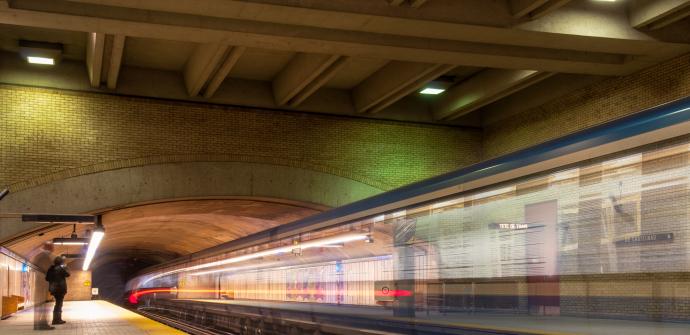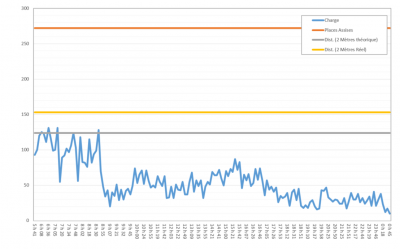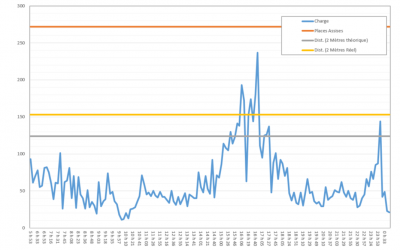The STM provides an update on service adjustments to the bus, métro and paratransit networks
The Société de transport de Montréal (STM) wishes to provide an update on the bus, métro and paratransit service since it was revised on March 30, 2020, in order to take into account the major decrease in ridership and workforce planning in the context of the COVID-19 pandemic.
Initial findings, based on available data, indicate that almost all customers (94%) have modified their travel habits, and perceptions of the STM and the level of confidence in its service have stabilized.
Bus network
On Tuesday, March 31, compared with an equivalent average weekday, the STM observed an 83% decrease in ridership in the bus network, which represents 139,000 trips.
To ensure a safe environment for customers and employees, staff has been dispatched in the field to manage unforeseen circumstances and, in particular, to identify the busiest routes. The STM also has backup buses on the road to diminish impacts on service, and is making the necessary daily adjustments through daily ridership analyses.
The new bus service is based on an expected 17,000 trips per day. Analyses indicate an average of only four people per trip, a number that makes it possible to ensure the recommended physical distancing. Only 2% of trips had more than 20 passengers on board, and these situations occurred over a short period of time, generally below the 15-minute limit specified by public health authorities.
On March 29, all drivers were instructed to notify the bus operations centre of any overcrowding so that available backup buses could be quickly added where needed. In case of overcrowding, drivers also have a button on the console that they can use to notify the bus operations centre of problem areas on the affected bus route.
Paratransit network
That same day, the paratransit network handled 2,150 trips, an 87% decrease compared with a similar day.
Since March 30, the STM has equipped paratransit drivers with gloves, surgical masks and protective goggles that they can wear as needed, since they are in direct contact with customers during their transports.
Métro network
On Tuesday, March 31, compared with an average weekday, the STM observed a 90% decrease in ridership, which represents 99,000 trips.
The cameras installed throughout the underground network indicate that ridership on trains is generally low, and that the distance between passengers is respected overall. Exceptions where loads on trains are greater are limited and identified specifically on the Orange line. On April 1, of the 340 trips on that line, only 4.1% were overloaded, in particular between 4:00 and 5:00 p.m., from Champ-de-Mars station, and in the morning, between Lionel-Groulx and Côte-Vertu stations. New adjustments are planned as of today thanks, among other things, to the addition of backup trains planned for this purpose.
Onboard train ridership on the orange line toward Côte-Vertu (AM peak period)
Onboard train ridership on the orange line toward Montmorency (PM peak period)
Protection with regard to COVID-19 is a shared responsibility
The STM is asking customers to assess the situation based on their comfort level, and, in particular, to follow the recommended physical distancing measures. Following health measures can also mean reviewing their personal preferences, for example:
- Choosing a car closer to the head or end of the train, which often have more space, rather than choosing the car closest to the exit of their station
- Modifying their work schedule to avoid travelling during peak periods
- Not staying near the doors on a métro car
Since the beginning of the COVID-19 crisis, in cooperation with Quebec’s public health authorities, the STM has implemented measures to protect its customers and employees, in particular by limiting direct contact, and it has reviewed and enhanced its cleaning methods in its facilities and vehicles.
Remember that it is essential to avoid using public transit if you have any symptoms.


